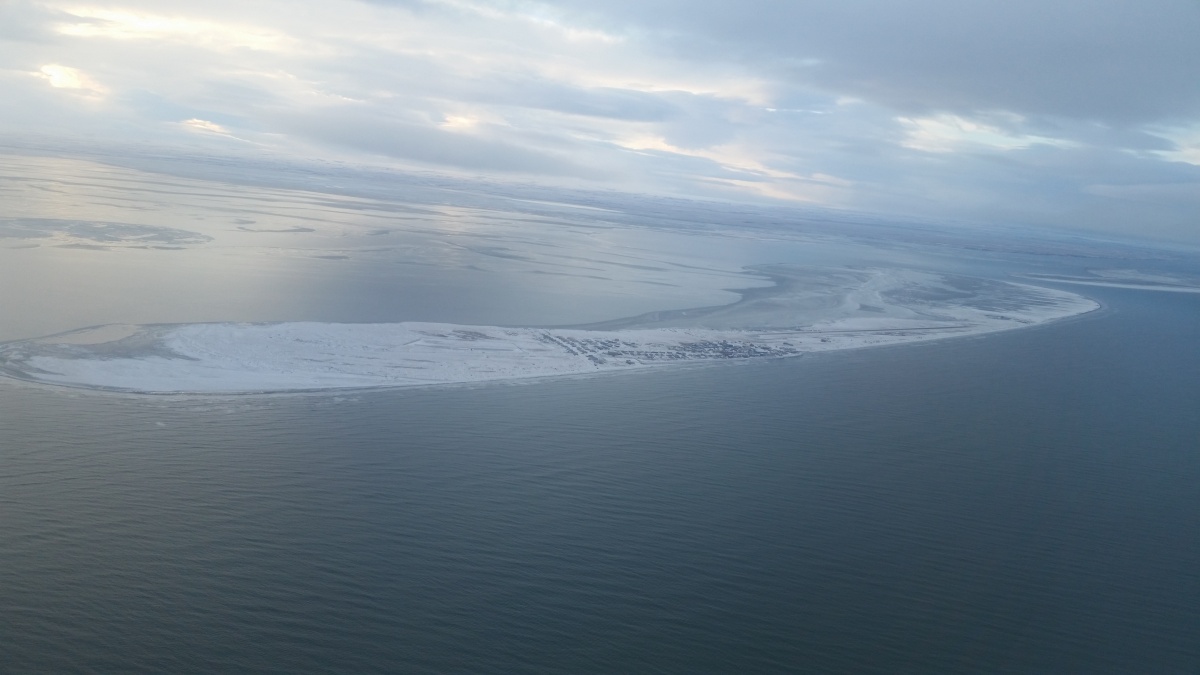Some Alaska villages don’t need to ‘imagine a day without water’
Some Alaska villages still lack basic water infrastructure — and the state's political leaders have mostly failed in addressing this.

Every year, the national “Imagine a Day without Water” campaign raises awareness and educates Americans about the value of water in everyday life.
In October 2019, the campaign’s theme emphasized imagining “No water to drink, or even to make coffee with. No water to shower, flush the toilet, or do laundry…Some communities in America already know how impossible it is to try to go a day without our most precious resource: Water.” There are five villages in the Bering Sea region including Stebbins, Teller, Wales, Diomede and Shishmaref, that fit this description perfectly because most homes in these villages have never had running water.
Each of them have various strategies for compensating for the lack of running water. Shishmaref, for example, collects snow over the winter into a catchment and drains the melted water into a lined pond. The water is filtered and then pumped into a 1.3 million gallon tank. The water catchment needs a new liner and a transfer line but the Alaska Native Tribal Health Consortium — an Anchorage based entity that provides funding for municipal water and sewer, doesn’t have the money to upgrade it. Diomede needs $50,000 to make improvements to its water system and in the meantime, in order to obtain access to fresh water for drinking, the majority of people, use rainwater or ice water.
At a rate of a quarter per gallon, the Wale’s school and teachers’ housing which are supported by Bering Straits School District and the health clinic are the only facilities that can afford treated running water but the rest of the community goes without. For sewage disposal, the village stages bins in various locations throughout the community where people dump their honey buckets. The bins are collected and hauled out to a lagoon where they are dumped.
Due to a lack of infrastructure, Shishmaref, Diomede, and Wales are on the Environmental Protection Agency’s list of drinking water systems that are over the limits for what EPA has deemed to be safe for humans for arsenic, nitrates, uranium, and other contaminants. Even those Alaska villages with adequate water infrastructure still have occasional issues with access to running water. After someone ran into a power pole with a backhoe in Elim (located in the Norton Sound region) last spring, the municipal water pump blew a fuse due to the lack of electricity, and the entire village had no electricity or running water for almost a week while the city waited for a new pump.
So far, Bering Sea communities haven’t been able to get much assistance in establishing water infrastructure from the federal or state government.
While the Trump administration recently adopted a $1.5 trillion plan to rebuild the countries crumbling water infrastructure including in small communities, for example, the plan includes a mere $200 billion in federal funds while the remaining $1.3 trillion would come from sources that those communities would need to come up with. Because many small communities generally don’t have access to those kinds of funds they would need to turn to private investors to develop or rehabilitate water infrastructure giving those investors too much control over what has traditionally been a public resource.
Similarly, in order to cut spending or pave the way for oil and gas development in Alaska, so far, Governor Mike Dunleavy’s focus on Arctic communities is to veto legislation or cut existing programs designed to protect human health and welfare or that would have helped build resiliency to the ravages of climate change.
One of the only politicians who has paid any attention to the appalling lack of water infrastructure for Arctic communities, is Senator Lisa Murkowski who after a visit last summer to Teller, Brevig Mission and Wales stated “we know the costs here are so high it can literally take every dollar for water and wastewater projects.”
However, Senator Murkowski may also be missing an opportunity to incorporate adequate water infrastructure for Arctic village communities in her recently revealed plans to reintroduce the Shipping and Environmental Arctic Leadership Act (SEAL Act). The act is intended to shore up infrastructure that could take advantage of increased shipping and exploitation of resources in the Bering Sea area, but it does not include developing adequate water infrastructure for Arctic communities.
It seems that whenever, the federal or state policy makers talk about the Arctic, these days, the emphasis is on taking advantage of a warming temperatures and melting sea ice to exploit rather than protect local communities or the environment. In so doing, we are continuing to leave many such communities way behind.
Hal Shepherd is a consultant and writer on water policy issues living in Homer, Alaska.
The views expressed here are the writers’ and are not necessarily endorsed by ArcticToday, which welcomes a broad range of viewpoints. To submit a piece for consideration, email commentary (at) arctictoday.com.